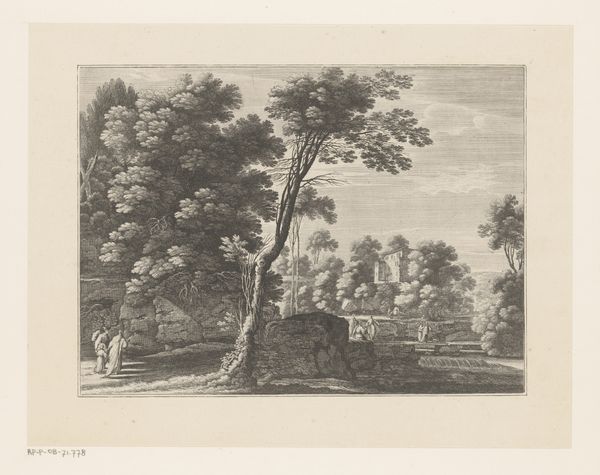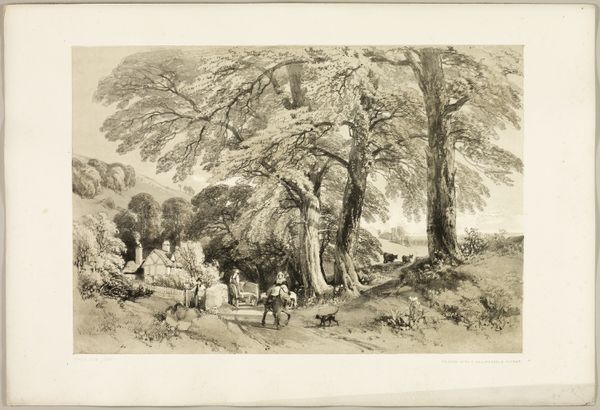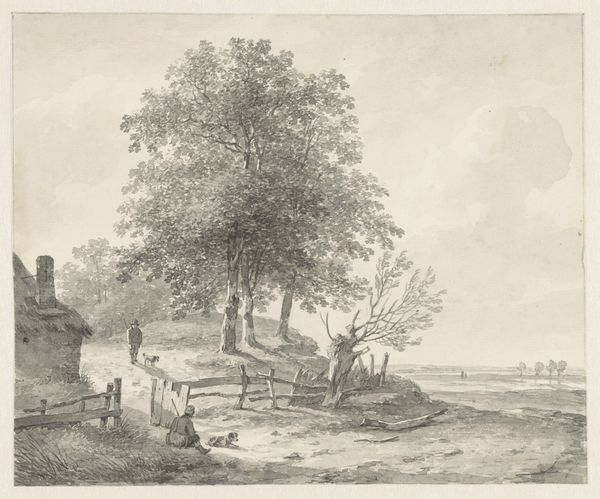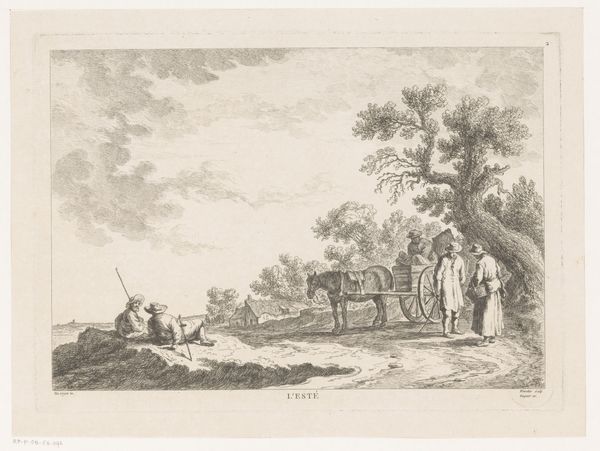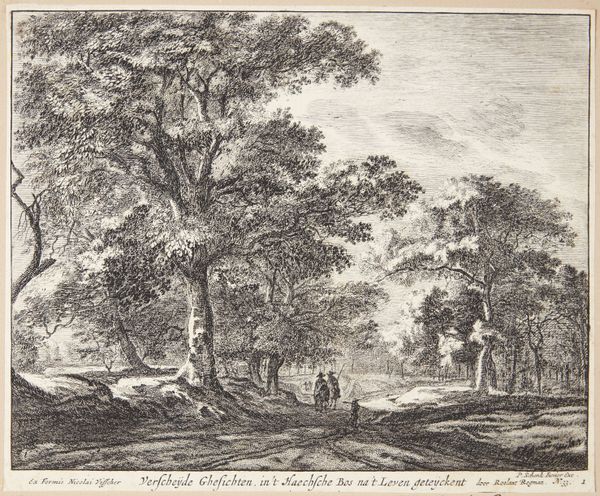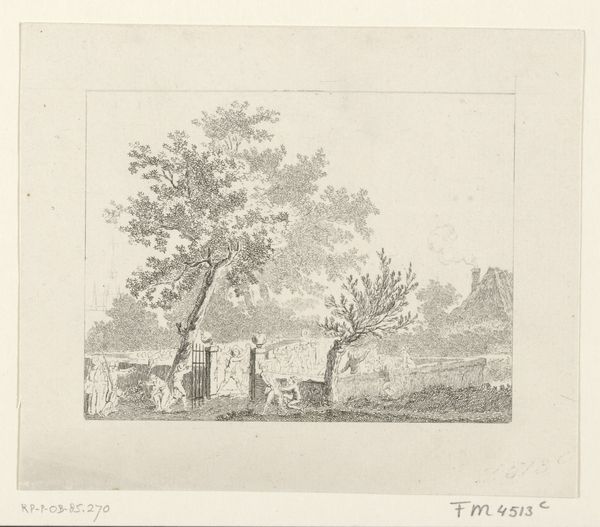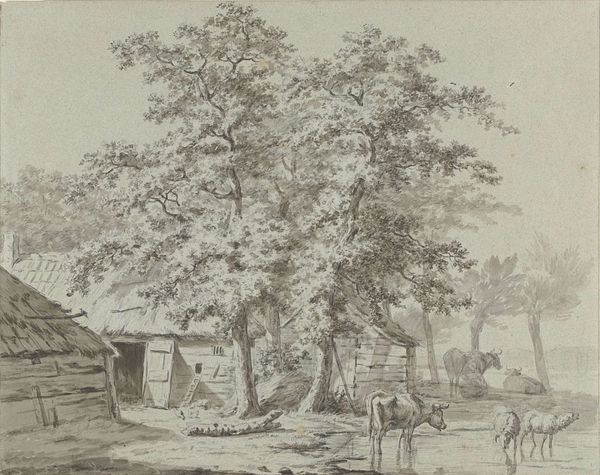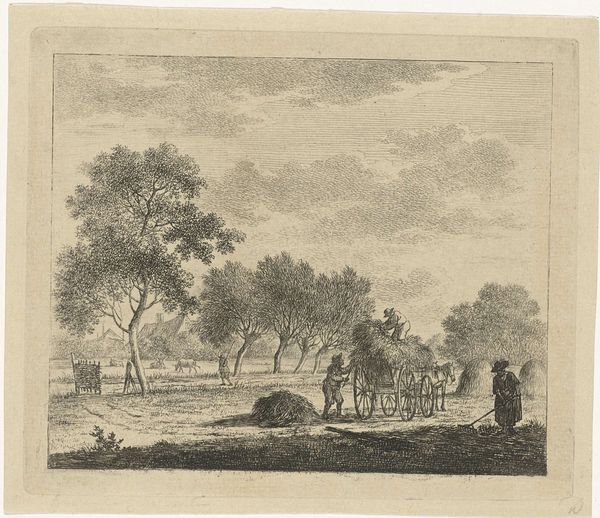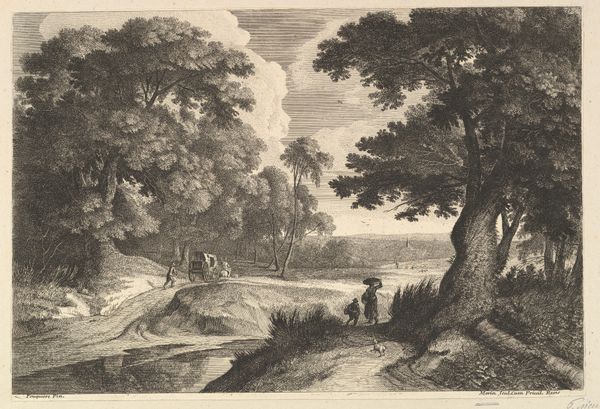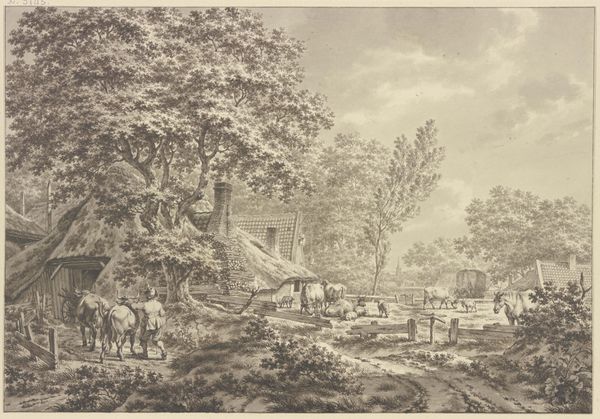
drawing, print, etching
#
drawing
# print
#
etching
#
landscape
#
figuration
#
romanticism
#
line
#
cityscape
#
genre-painting
Dimensions: plate: 4 1/2 x 6 3/4 in. sheet: 4 3/4 x 7 1/8 in.
Copyright: Public Domain
Editor: So, this is Johann Christoph Erhard's "On the Canal in Vienna" from 1819. It's an etching. I’m immediately struck by how much is happening. There's this wonderful detail in the figures and the trees, but there's also a feeling of everyday life, sort of like a snapshot. How do you interpret this work? Curator: From a historical perspective, it’s a fascinating glimpse into the Biedermeier era. While revolutions and Napoleonic wars raged elsewhere, Vienna enjoyed a period of relative peace and focus on domestic life. Etchings like this served as a way for people to circulate images and information about local landscapes. Does this suggest anything about the society which would cherish it? Editor: Definitely! It seems like a way for people to connect with their surroundings and build a sense of local identity. I mean, imagine not having photography – an etching like this becomes so important. Curator: Exactly. The romantic interest in the landscape is channeled into something specifically Viennese and shareable. Also, consider the burgeoning middle class. This isn't high art for aristocrats. This etching would be much more accessible and speaks to their growing social and economic influence. This affects its reception in powerful ways. How do you see that affecting how the landscape itself is shown? Editor: That makes so much sense. Maybe the details I mentioned earlier – like the people working or traveling – become important because they show life as it's actually lived by regular people. They want to see themselves reflected. Curator: Precisely. The seemingly mundane activities of canal life gain significance by becoming visible and validated as subject matter for "art". Also, observe that buildings are faintly shown in the background. It connects to the tradition of grander landscapes but domesticates that by filtering through the everyday life occurring on the canal. This makes it relatable. Editor: Wow, I never considered the political and social impact of just choosing a seemingly ordinary subject. Now it all clicks! It’s much more complex than just a pretty picture. Curator: Exactly, understanding the cultural forces at play makes these images come alive! It provides a richer appreciation, no?
Comments
No comments
Be the first to comment and join the conversation on the ultimate creative platform.
